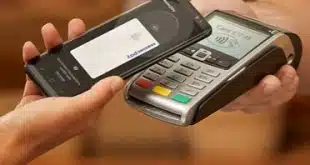The U.S. payments industry is counting on EMV chip cards to eliminate much if not all of the counterfeit and lost-and-stolen fraud merchants suffer at the point of sale. They may well do that when EMV is fully deployed, but is it likely that rising e-commerce fraud will swamp any fraud savings the industry realizes in stores?
Some industry watchers think so. “When you think about the growth rates [online], I think it’s possible,” says Michael Grillo, director and marketing-line leader for ACI Worldwide Inc., a Naples, Fla.-based transaction and fraud solutions provider.
Others think it’s not only possible, it’s inevitable. Javelin Strategy & Research, a Pleasanton, Calif.-based payments research firm, has forecast that online fraud losses will reach $18.6 billion in 2018, nearly doubling the $10.4 billion sustained last year. Yet, over the same period of time, the widespread deployment of EMV will reduce brick-and-mortar fraud by $1.5 billion, Javelin predicts, from $6 billion to $4.5 billion. That’s a net increase of $6.7 billion overall.
“We’ve modeled that, card-not-present fraud outpacing other types of fraud,” says Nick Holland, a Javelin senior researcher. “Fraud is already large online.”
E-commerce fraud has soared in other countries after the rollout of EMV, supposedly because EMV makes card counterfeiting much more difficult and expensive for criminals, who then naturally turn to the less fortified online channel.
Experts, however, differ over the question of whether EMV causes this spike in online fraud. Holland, for example, argues card-not-present fraud will grow simply as a function of the growth of online transaction activity. Fraudsters aren’t heading to the online channel, he says, they’re already there. “EMV is completely irrelevant,” he says.
Regardless of the cause, it appears that online fraud will not only expand rapidly, it could well more than offset the fraud savings expected at the point of sale after the full implementation of EMV. That has some payments executives groping for answers. “Without a doubt, fraud is going to move online, and there’s not a lot we can do,” says Greg Cohen, president of iPayment Inc., a New York City-based merchant-services provider that serves about 150,000 merchants, including a mix of POS and online sellers.
Some companies with deep roots in the POS market have started to arm themselves. Terminal maker Ingenico, for example, acquired European online-payments providers Ogone and Global Collect in January 2013 and July 2014, respectively, in part to help online merchants prepare for the expected increase in fraud.
“It was to satisfy the demand we have from merchants,” says Greg Burch, vice president of mobile for Ingenico’s U.S. operation. “What made these companies attractive was the sophisticated level of fraud-prevention tools they have. Both are European, but both have a presence in the U.S.”
Cohen and others are hoping a revamped version of 3D Secure will help stem the tide of fraud. The original version, introduced a decade ago by the major card networks, proved effective but won little adoption among merchants, many of which complained the technology was difficult to integrate and drove away customers.
In its original form, 3D Secure interrupted the checkout process to require customers to authenticate themselves by entering a password in a separate page or popup window. Many customers simply abandoned their shopping cart rather than jump through the additional hoop.
But when customers cooperated, the technology worked as intended, some observers argue. “Card-not-present fraud has gone up, but primarily at merchants that have not deployed a 3D Secure capability,” says ACI’s Grillo.
Now, EMVCo, the company that manages the EMV specifications, has taken on the job of overhauling 3D Secure. That’s leading some players to be hopeful. “The next version of 3D Secure should help,” says Cohen.




